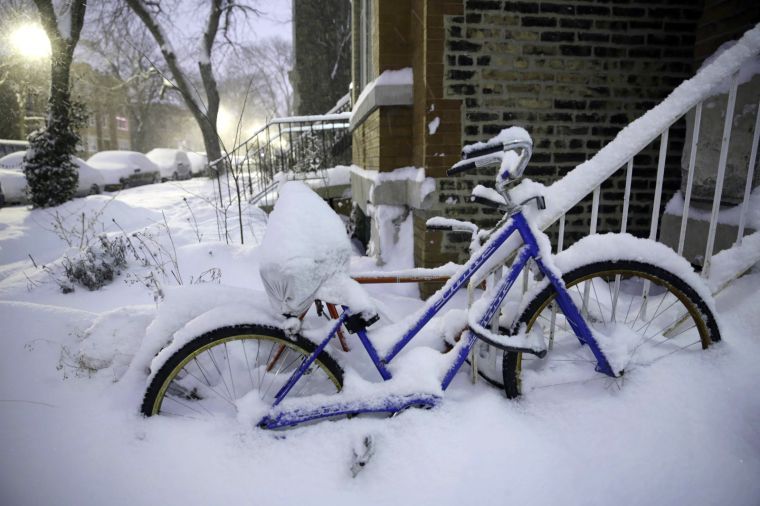Maintenance, visibility the keys to safe winter biking
January 13, 2014
If you plan on riding a bike to commute this winter, be prepared for a plethora of remarkably annoying obstacles.
Icy turns, snow-encrusted bike lanes and the creepy way that cars refuse to pass you during winter are just the beginning. Salt deposits can build up into mounds, essentially becoming speed bumps on a busy road, and fallen autumn leaves saturate into tire-imprinted mush, caking the sides of congested roads right where many cyclists prefer to ride. In addition, concrete shrinks in winter, causing potholes to expand and deepen, turning a jarring bump into a bike crash waiting to happen.
Traversing these obstacles while avoiding the side-view mirror of that Volvo precariously positioned on your left side is by no means an easy task. And by the way, that lady in the red Subaru is totally giving you the finger.
Riding a bike in winter is different than in summer — and far more dangerous — so all riders should be prepared for the elements and the toll that winter can take on your bike.
Iron City Bikes employee Chris Lundgren has worked at the bicycle shop on Bouquet Street in Oakland for more than four years. He commutes by bike to Oakland every business day from his home in Morningside — a commute that usually takes him up to 25 minutes. With years of experience, he understands how to keep a bike in top condition during the roughest of winters.
His advice is succinct: check your bike all over after each ride to make sure everything works.
“Lubricating parts a lot is really important,” Lundgren said. “If you have rim brakes, you want to lubricate the pivots on those, [as well as] your chain, of course.”
“You just want to clean it up, get all the salt off,” he said.
According to Lundgren, salt can cause your bike a lot of trouble in winter by jamming up the works, and it can very well lead to permanent damage if not properly handled.
“You actually really need to make sure you wash off as much salt as you can — like every time you ride it,” he said. “The more you do it, the better.”
Lundgren also recommends checking your brakes before every ride, purchasing bike fenders to avoid excessive road splatter and filling up your tires with air every week. Putting front and back lights on your bike is also recommended. When roads are icy at night, other vehicles need as much advance warning as possible to get around you.
This leads to another important point: Always be cognizant of cars and the other traffic around you.
That is a year-round, universal rule for all cyclists, but it takes on special significance in winter. When ice is on the ground, drivers are more paranoid. That means that if you are riding a bike, you are automatically even more of a nuisance to them than usual. People in cars typically hate people on bikes. The feeling is generally reciprocated, but seeing as one group has a 2,000-pound weight advantage over the other, you should probably swallow your pride and avoid a crash.
So to avoid altercations, “you have to make sure you signal your turns,” Lundgren said. “I see a lot of riders out there not doing it, and it’s not safe.”
The safety of those on bikes is more or less dependent on the behavior of the drivers around them, so cyclists need to do everything in their power to follow traffic laws and avoid confrontations with vehicles. Stop at red lights, maintain a consistent speed and try to stay on your side of the lane. When you hold up your end of the agreement, you have full rights to yell at drivers when they don’t.
Be safe, love your bike and don’t let the weather stop you.








